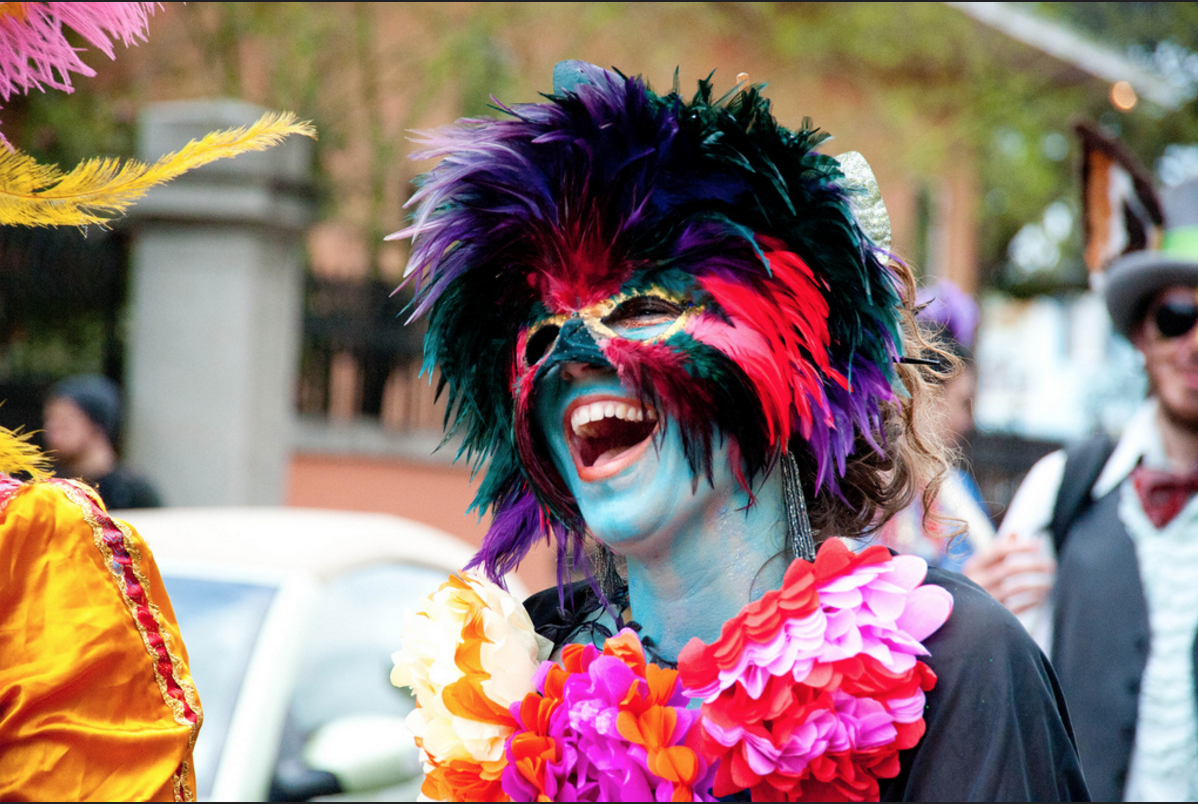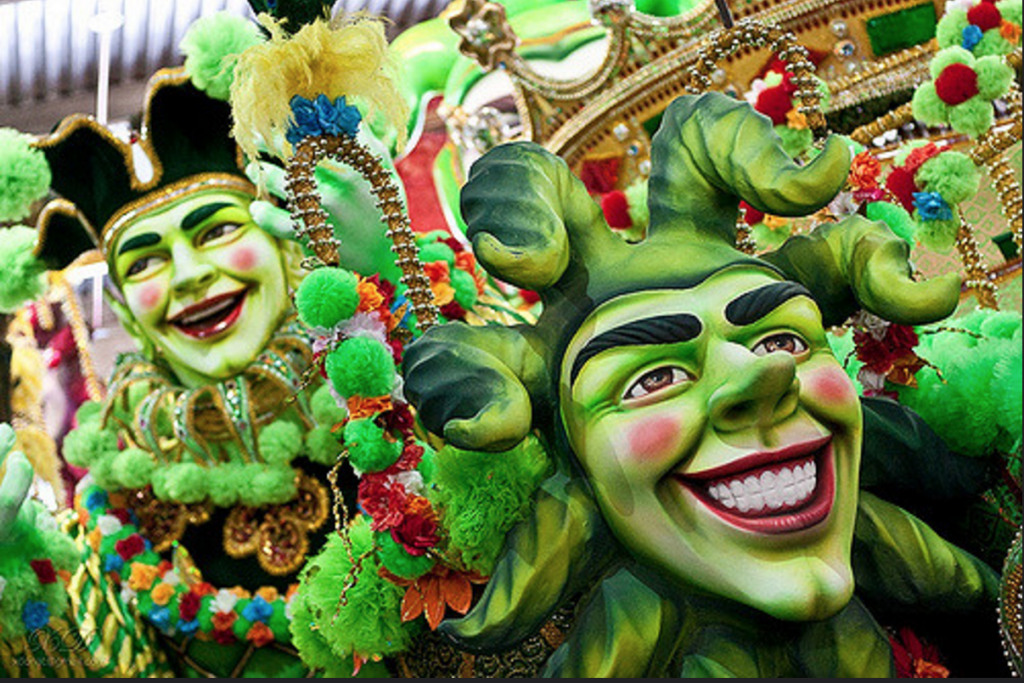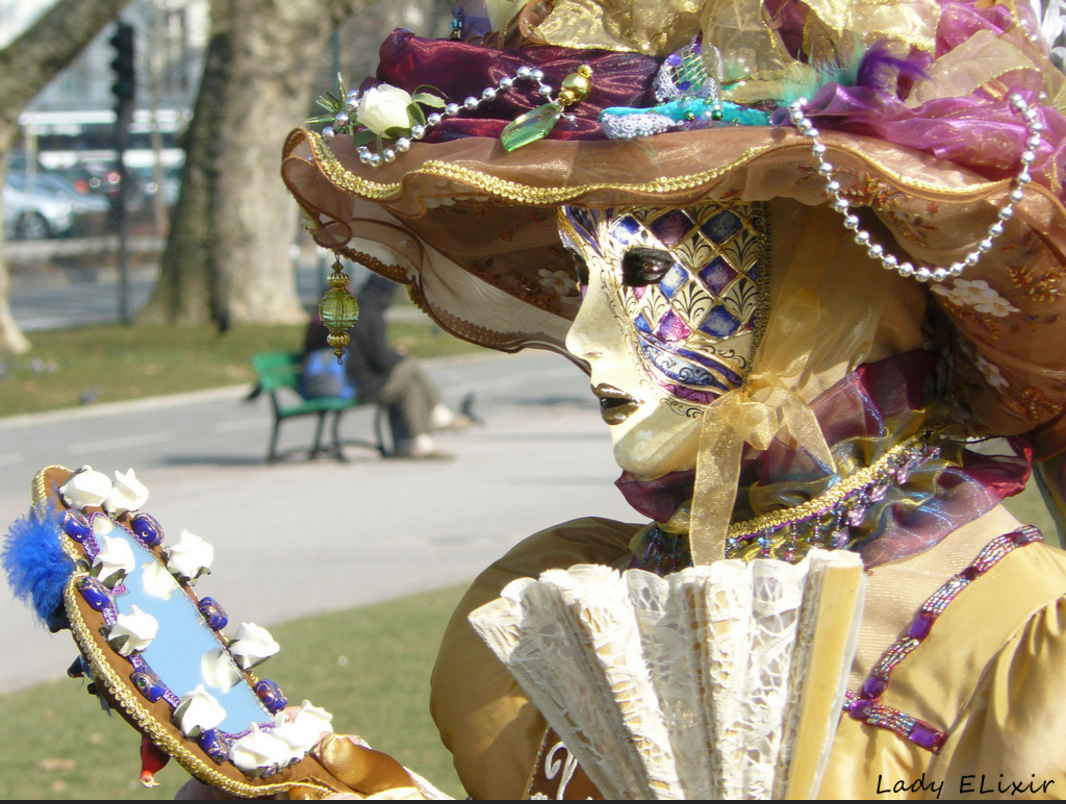Did you ever wonder about the French connection to Mardi Gras?
Mardi Gras means “Fat Tuesday” in French. It’s the day before Ash Wednesday and refers to the practice of eating fatty foods before the start of Lent when meat is forbidden. Carnival festivities begin with the Feast of Epiphany (or Twelfth Night) on January 6 and last through midnight on Fat Tuesday. Carnival can be traced to “carne levare” (“put away the meat”), a ritual which began in Europe during the medieval period.
Mardi Gras is said to have arrived in North America on March 3, 1699, when explorers who’d been sent by the French king to defend France’s territory in Louisiane set up an encampment just south of New Orleans. Realizing they had arrived on the same date as Fat Tuesday in France, they proclaimed the spot Pointe du Mardi Gras and held a party. It turned into an annual celebration and, by the 1800s, started taking on the character we think of today: street processions, masked balls, and frenzied revelry. In 1875, the governor of Louisiana signed the Mardi Gras Act, which declared Fat Tuesday a legal holiday.
Mardi Gras is celebrated throughout France. One of the most festive displays takes place in Nice. Le Carnaval de Nice dates to 1294 when the Count of Provence Charles d’Anjou celebrated Carnival in Nice. It was suspended around the French Revolution but returned in the 1870s.
Modern-day carnival in Nice has a different theme each year. Elaborate floats are created in special workshops. The extravaganza lasts 15 days and includes parades, music, and dancers. Flowers are a big part of the celebration in Nice (the Flower Parade was first held in 1876). Costumed revelers on floats throw thousands of fresh flowers to the delight of spectators assembled along the parade route.
Carnival in Paris is somewhat tamer. The festivities don’t extend over several weeks, but instead are concentrated on a single day which is devoted to a big parade and feasts. Scores of merry-makers turn out. One highlight is la promenade du boeuf gras (the procession of the fatted calf), when a cow that was bred in Limousine is paraded through the streets accompanied by dancers and singers and papier-måché figures. Le Carnaval de Paris was so popular during the medieval age that it’s said to have inspired the now famous celebrations in Rio and Venice. The tradition was curtailed for about 50 years, but the Paris Carnival was resurrected in 1997 and has been attracting larger crowds each year.
King’s Cake, or galette des rois, is eaten as part of the run-up to carnival season. It’s made with brioche dough and almond paste. Hidden inside is a fève (a dry bean) or tiny figurine. Whoever finds it is on the hook for buying the next cake. During carnival, the French traditionally eat les beignets du carnaval (think puffy doughnut, but more delicious).
Wherever you might go to celebrate, expect lots of partying, masks, colorful costumes, music, and dancing. Enjoy the revelry!
2018 dates:
- Mardi Gras is celebrated on Tuesday, February 13
- Le Carnaval de Paris is on February 11. It kicks off at Place Gambetta (20th arr) at about 2 pm and winds its way to Place de la République (arriving about 5 pm). For more details, visit the Carnaval de Paris website.
- Le Carnaval de Nice runs from February 17-March 3. For details, visit the Nice Carnaval website.
- In New Orleans, Lousisana, festivities will be taking place throughout the weekend before and leading up to Mardi Gras (Feb. 9-13). More information at the Mardi Gras New Orleans website.



